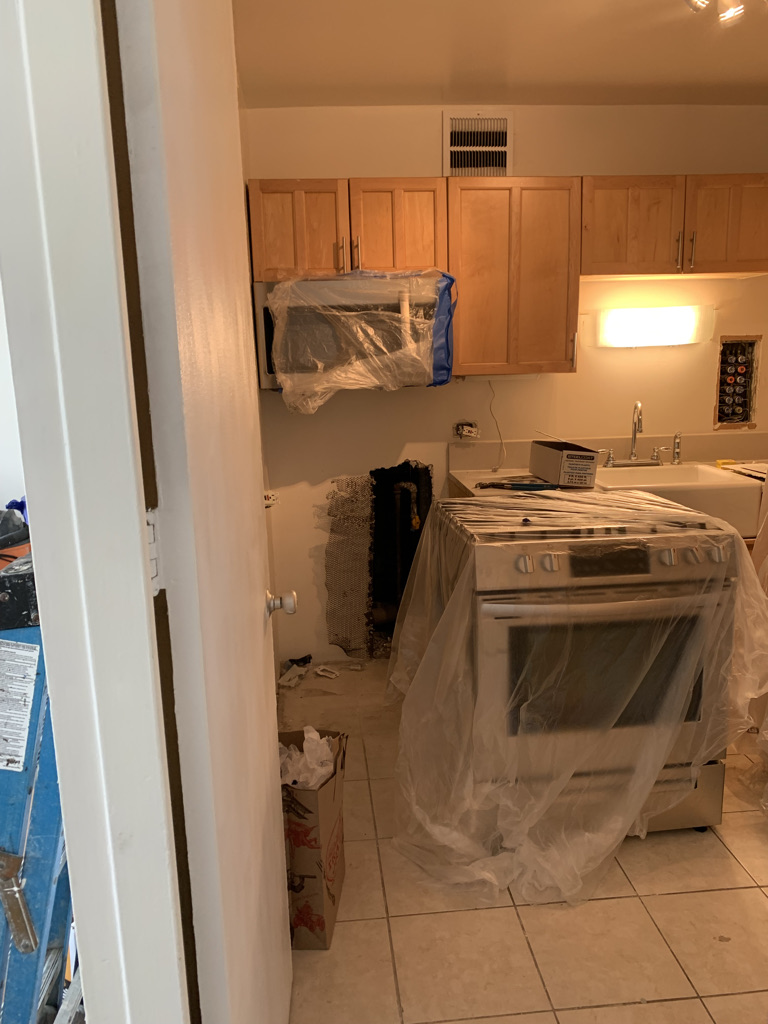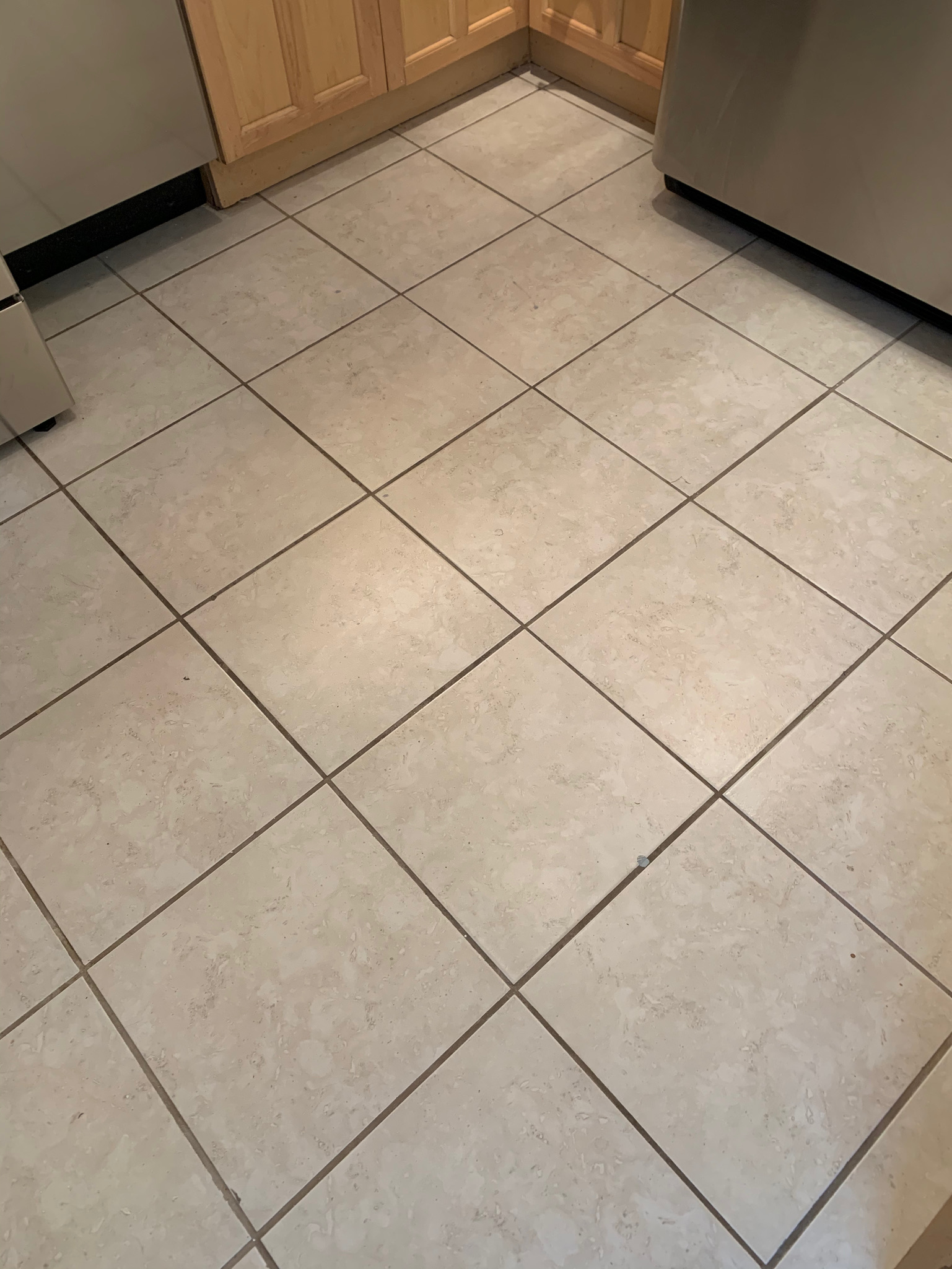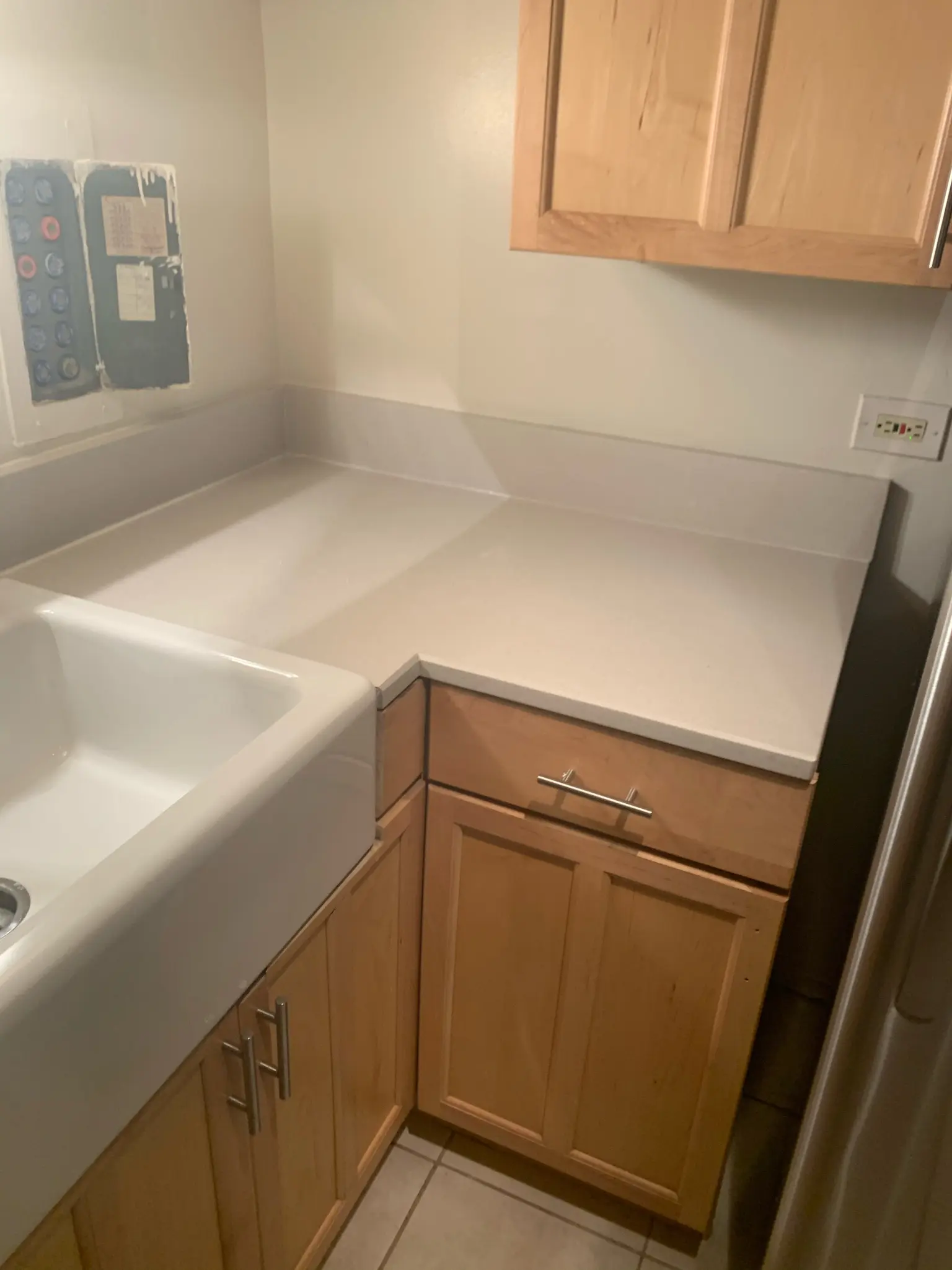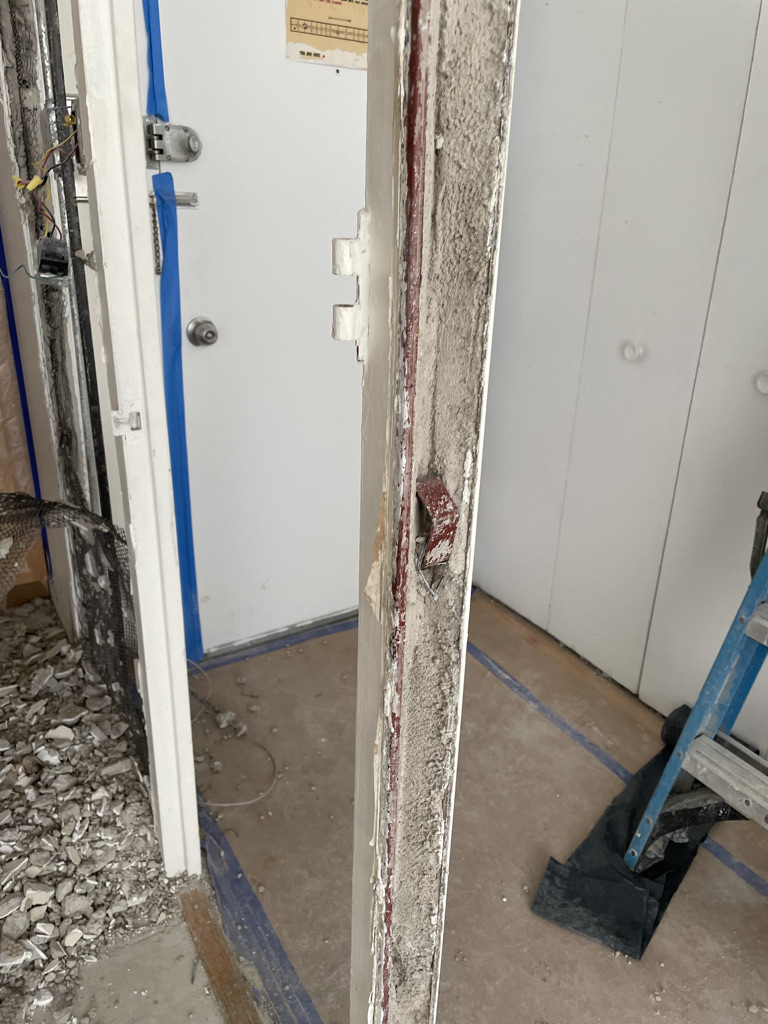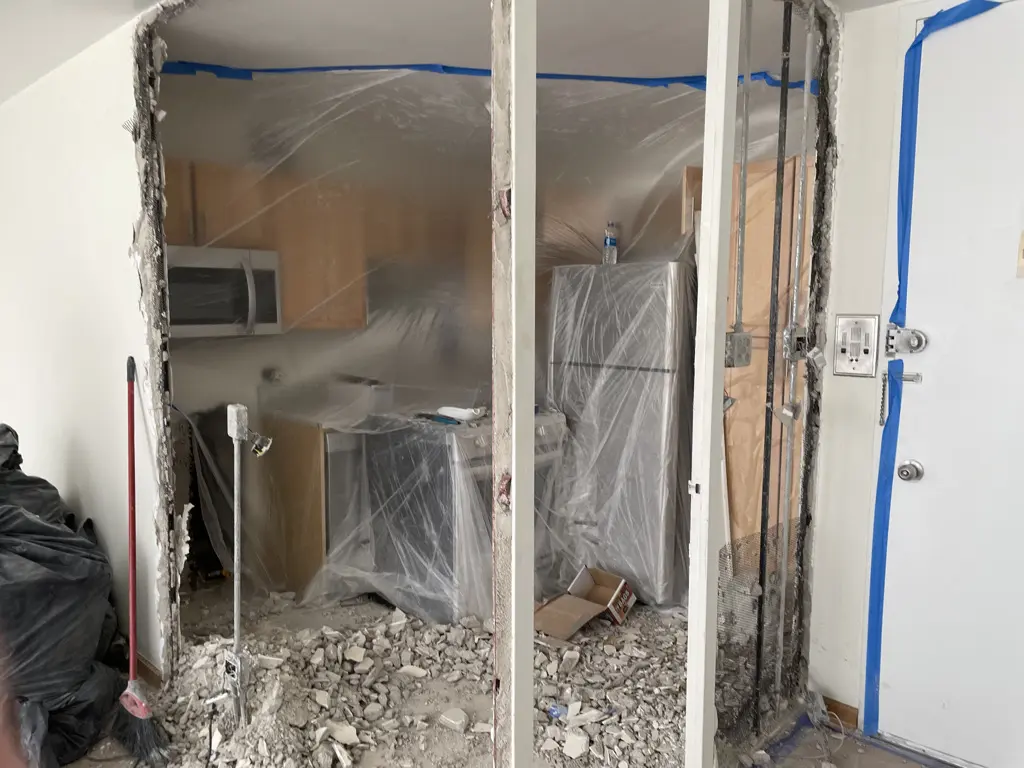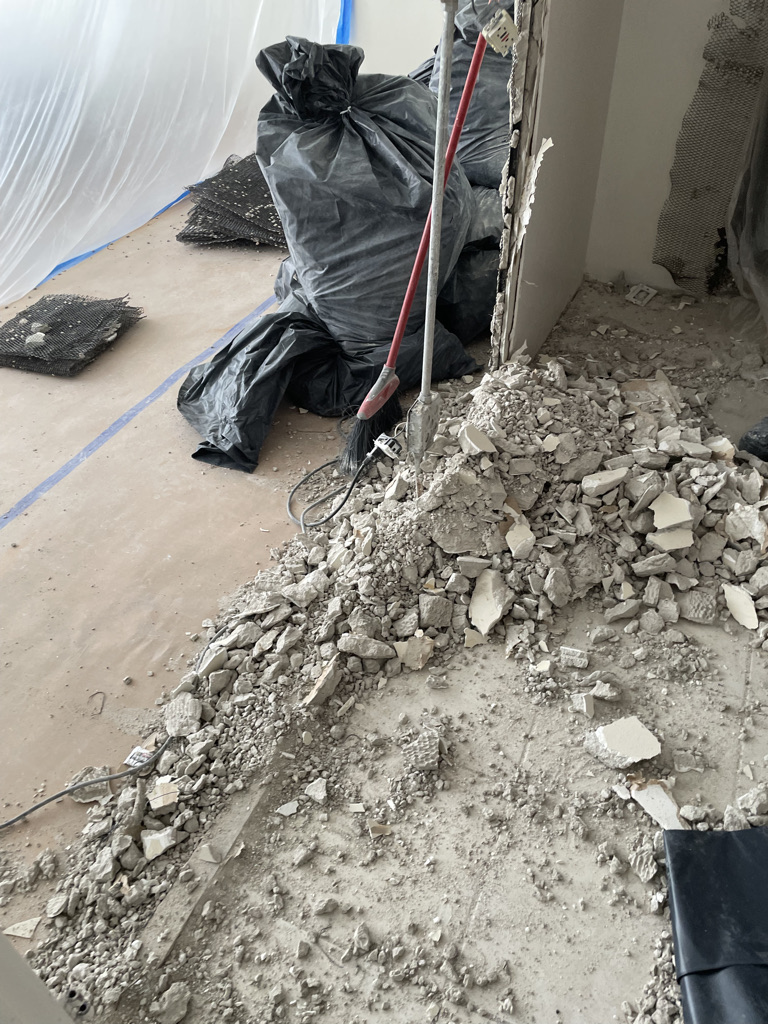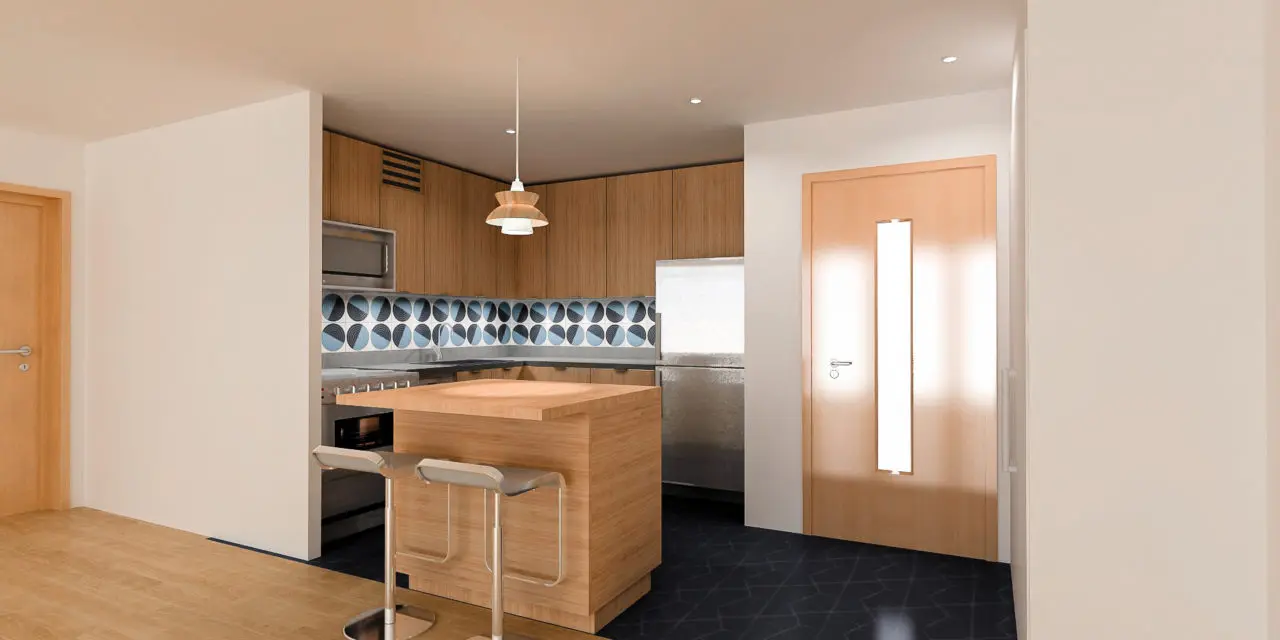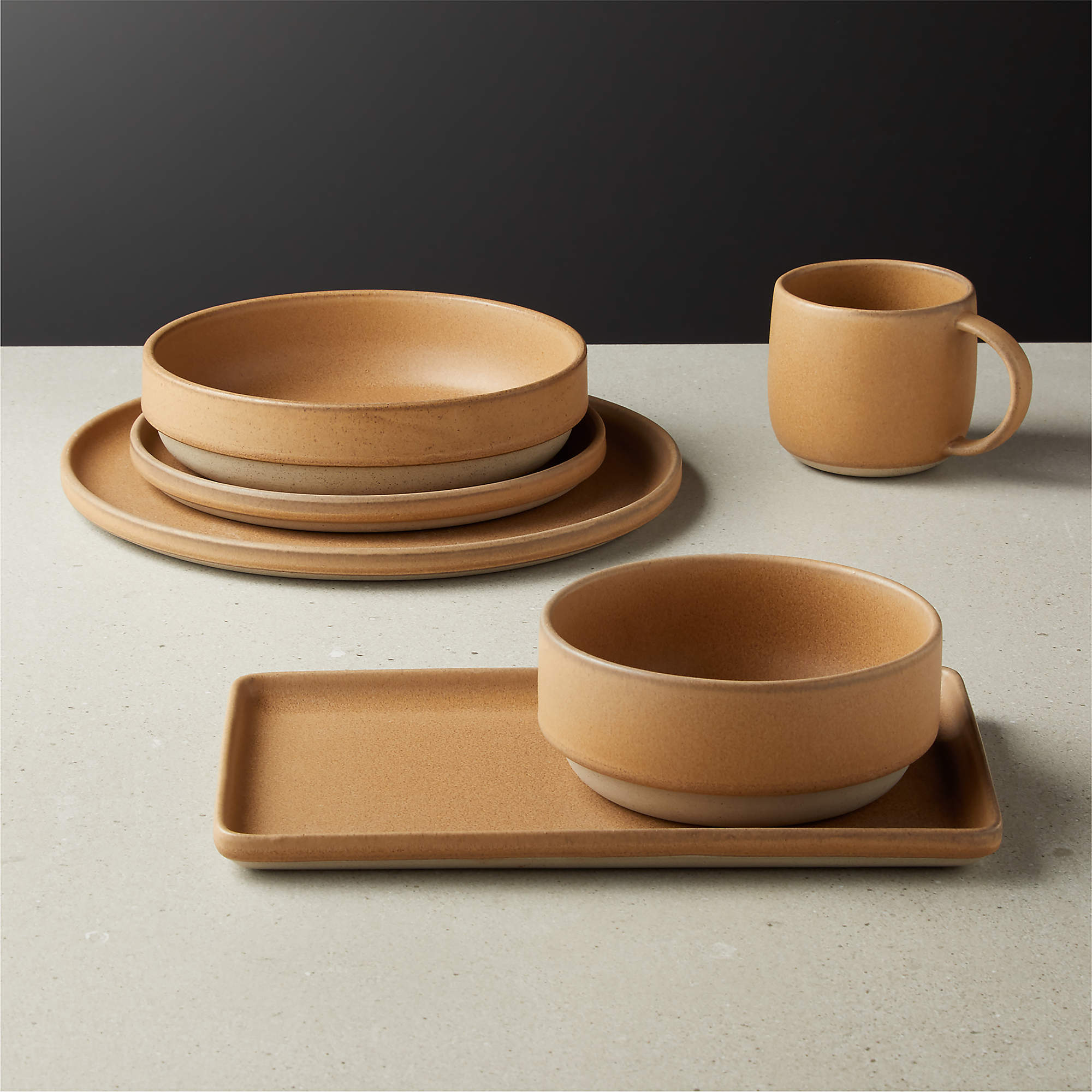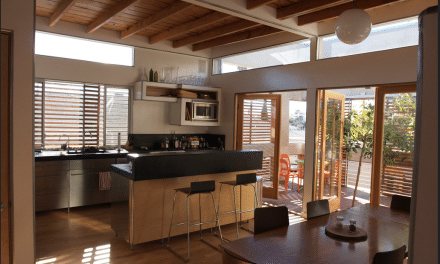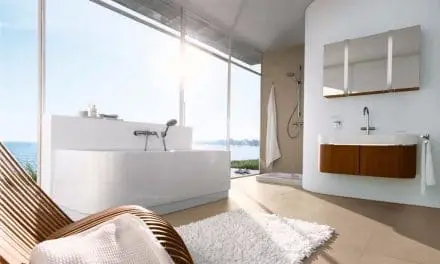#EcoRenovate Rendering Courtesy French Cabinetry
Some of the links below are affiliate links, meaning at no additional cost to you, we will earn a commission if you click through and make a purchase. Thank you for helping us continue to bring you great content.
By Jesse Bratter
Contributing Editor
The Concept: Revitalizing A Modernist Icon
How do you take a kitchen that was originally built in the 1960s and sustainably renovate it to last well into the future, bettering your health and the environment along the way, and making a social impact? Oh, and what if you want your updates to stay true to the building’s roots? Can “new” still feel authentic?
These were the tasks Elemental Green took on inside a penthouse at University Park Condominium for its first branded sustainable renovation, #EcoRenovate. Listed on the National Register of Historic places, the two-tower residential building in the Hyde Park neighborhood of Chicago presented a tall order. A mid-century modern creation of I.M. Pei and Araldo Cossutta, University Park Condominium remains a formidable gem amongst The Windy City’s architecture marvels. Mies van der Rohe, Louis Sullivan, and Frank Lloyd Wright each lay claim here. But thanks to University Park’s concrete curtain wall of arched floor-to-ceiling windows, it stands out in a crowd. It was clear from the start that any renovation endeavors would certainly preserve this element.
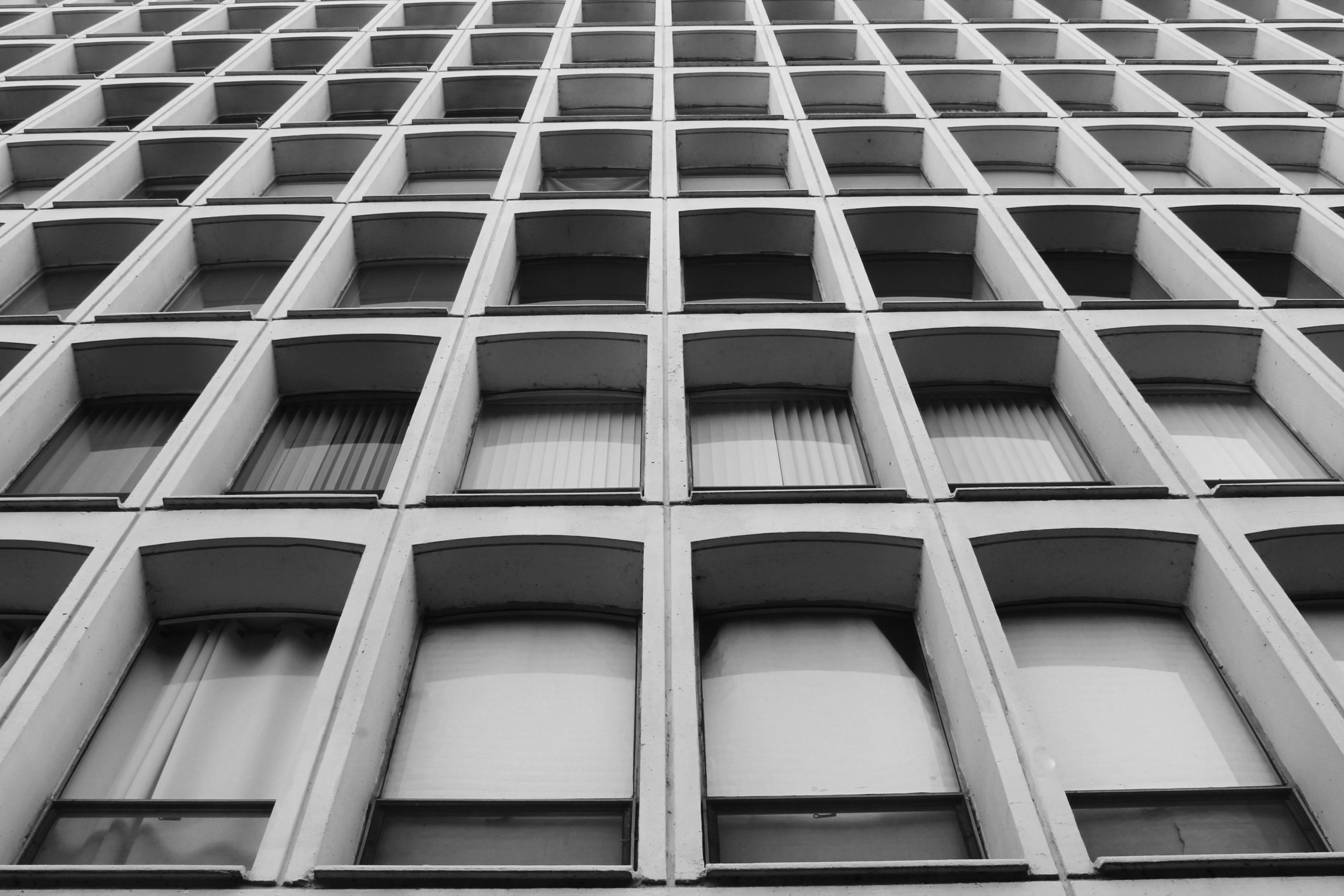
Photo by Benjamin Marcus / Alamy Stock Photo
We’re excited to reveal the renovated kitchen—a space that afforded several opportunities for going green through sustainable sourcing, recycled and recyclable materials, energy efficiency, water efficiency, and social good. Reimagining your home to be sustainable has never been easier, and here’s a peek at some of the steps we took that you can take in your own home.
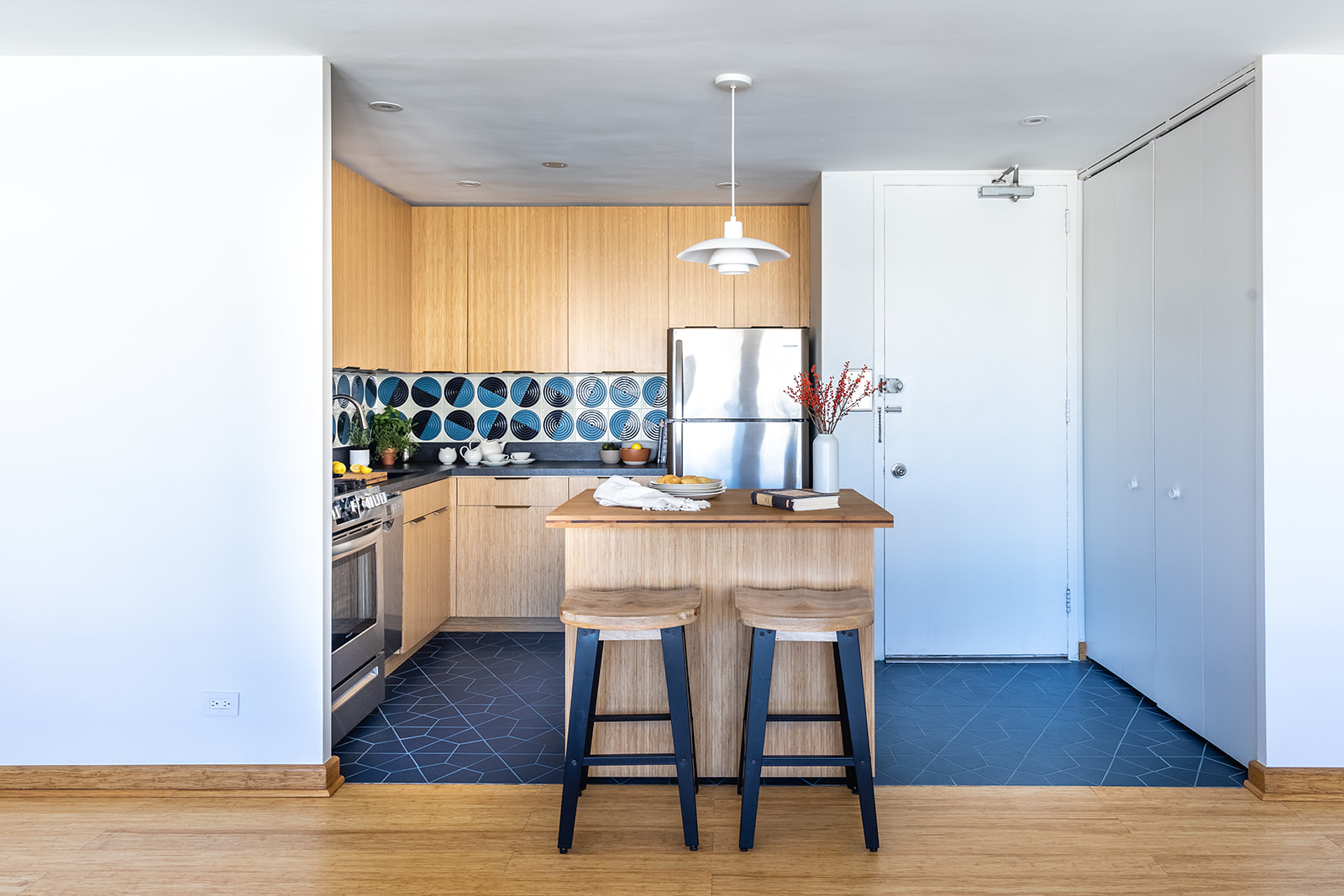
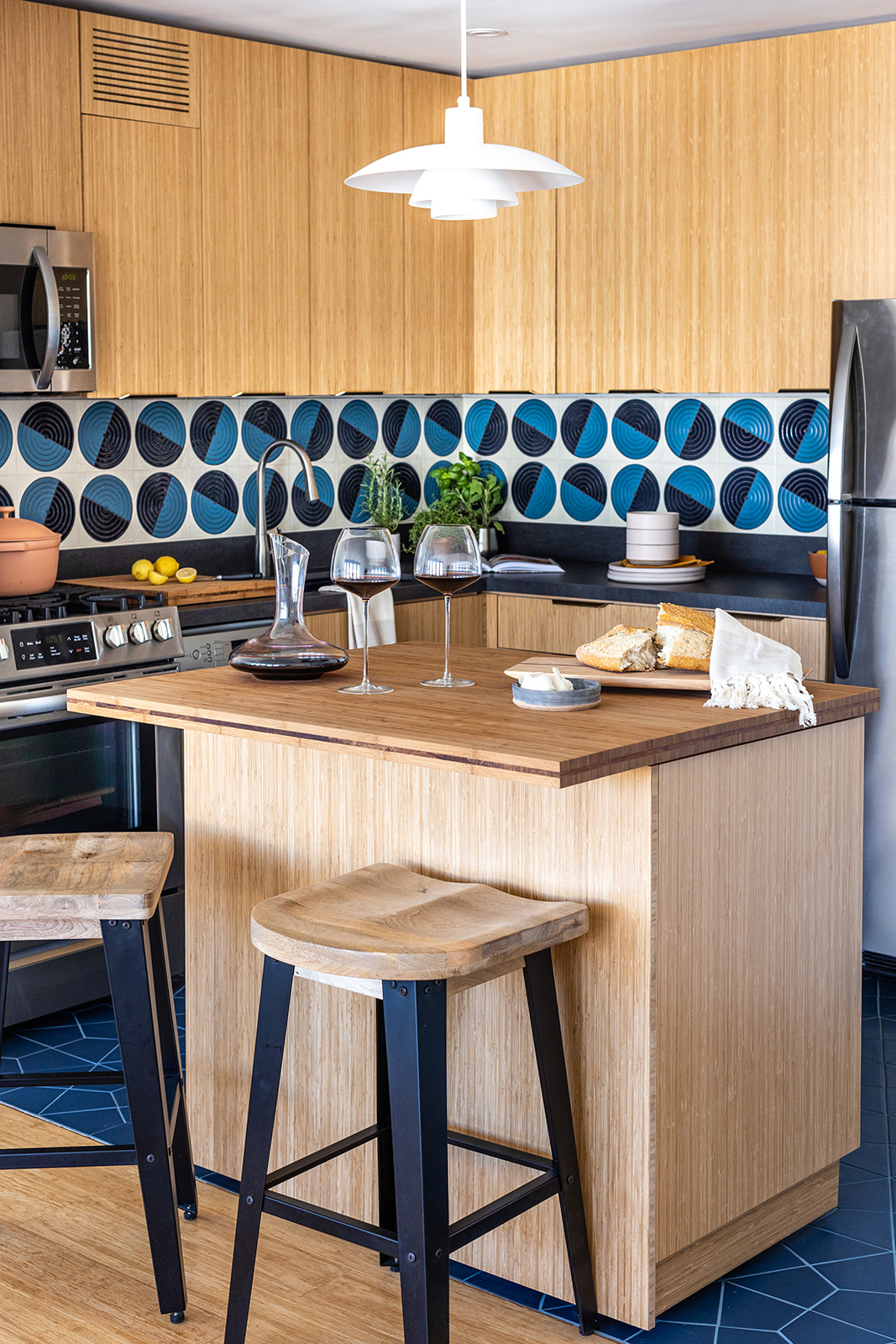
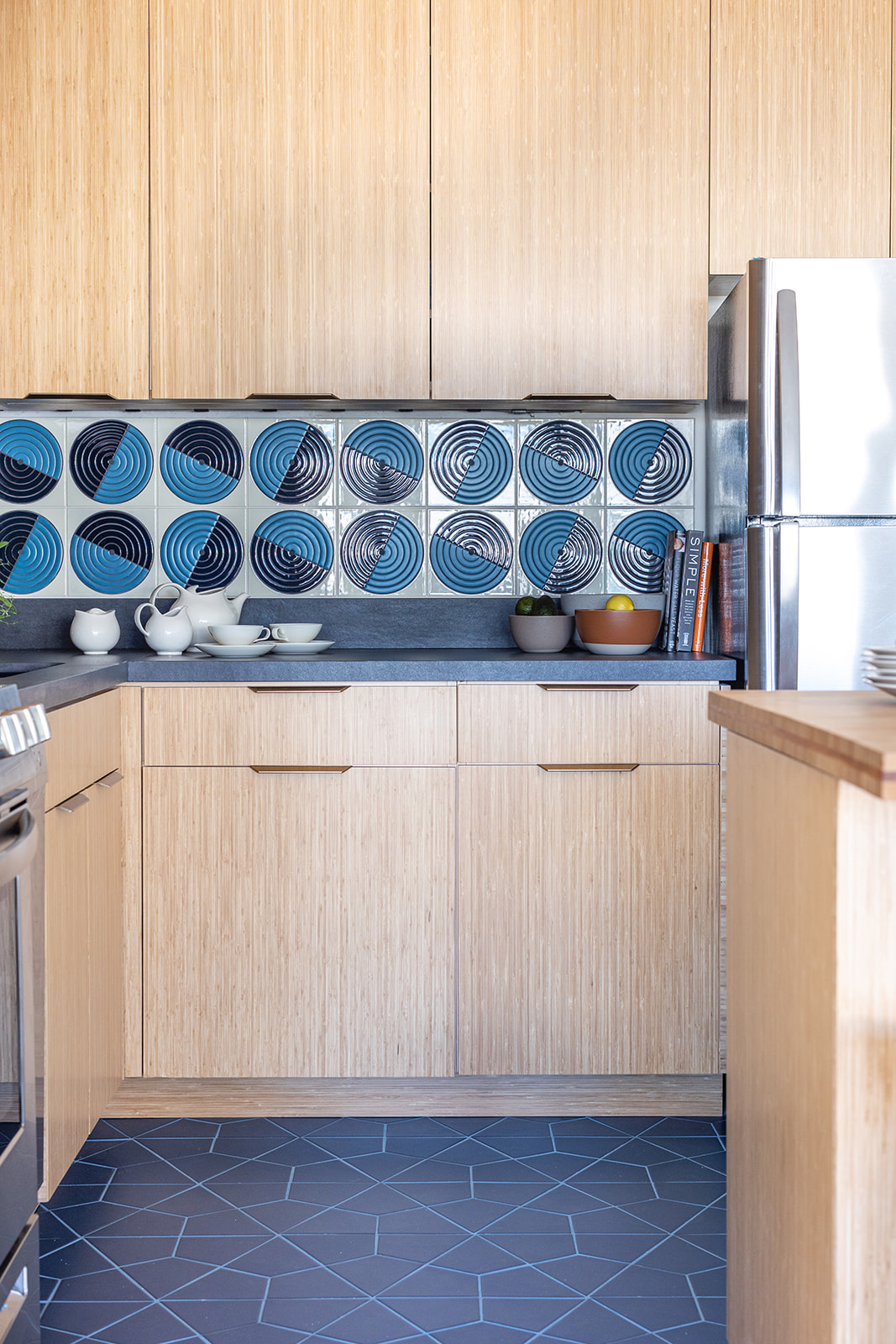
#EcoRenovate After Kitchen Photos by Jill Tiongco Photography
Before: A Small, Dark and Closed-In Kitchen
The small kitchen in this unit was previously closed off to the living room. This meant it received no natural light and had inadequate counter workspace. In the 1960s, when this unit was first built, it was custom practice to separate kitchens from the rest of the living spaces. They were considered utilitarian rooms rather than the heart of the home; a lifestyle that called for a more open plan and a place to simultaneously cook and gather wouldn’t become popular until much later.


#EcoRenovate Before Kitchen ⓒElemental Green / #EcoRenovate After Kitchen Photos by Jill Tiongco Photography
After: A Bright, Open and Airy Kitchen
So the first order of business was to remove the non-load bearing wall between the kitchen and living room, making the kitchen feel much larger and allowing in natural light from that beautiful wall of windows. A fresh, clean canvas was created with Recolor Paints’ White on the ceiling and Sail on the walls. (Dove can be seen on the living room wall.)
Thanks to French Cabinetry, bland blonde wood made way for a visually textured, nontoxic and eco-friendly caramel-toned, renewable Plyboo bamboo. Instead of the old, small row of floating cabinets, the new cabinetry reaches to the ceiling, providing more storage, with a custom-designed slatted panel to allow for ventilation. The refrigerator was moved to extend the counter space, which now boasts hard-wearing sintered stone slabs by Dekton.
Standard nickel hardware was replaced with sleek gold pulls that almost disappear into the cabinetry. And a new island provides visual delineation of the kitchen in the new open plan while also adding new storage and workspace. The island was custom fabricated on casters so that it could be moved when necessary during cooking or entertaining, and features a rapidly renewable bamboo Teragren countertop.
We removed the existing white square tile floor and replaced it with a new kite-shaped non-slip tile in Blue Velvet from Fireclay Tile, which was laid out to form large hexagons. This tile was extended into the adjoining entryway to make the kitchen appear larger. And a glossy Indigo Blue cast-iron undermount sink by Kohler is both eye-catching and durable.
Find A Focal Point
But the pièce-de-résistance is the design anchor around which Elemental Green chose to build: Fireclay’s handpainted Maze in Warm Motif. It’s crop-circle pattern were arranged so that the tiles resemble the revolution of a vinyl record. The graphic, geometric shape lends a more modernist vibe to the space that is reminiscent of the 1960s, and the tumbling pattern arrangement nods to the rich history of Chicago’s music scene.
Additional sustainable elements in the kitchen include energy-efficient refrigerator and dishwasher. The gas range was new when the unit was purchased which meant we wanted to make use of the existing unit vs buying a new range which would itself have embodied carbon. But due to IAQ and carbon footprint concerns, we prewired for an induction-electric range when the current range is at end of life.
LED rope lighting hides in a slot under the cabinetry to illuminate the counter workspace, while LED downlights wash the entire kitchen efficiently and effectively. The island is highlighted with a classic PH 4/3 Pendant Light by Poul Henningsen from Louis Poulsen, converted to LED.
A built-in Hydroviv Water filter removes lead and other contaminants from aging infrastructure right at the cold water tap. And a Molekule air purifier ensures that indoor air quality remains healthy in this urban environment.
Read on to learn more about the brands used in #EcoRenovate and what makes them a sustainable, smart choice.
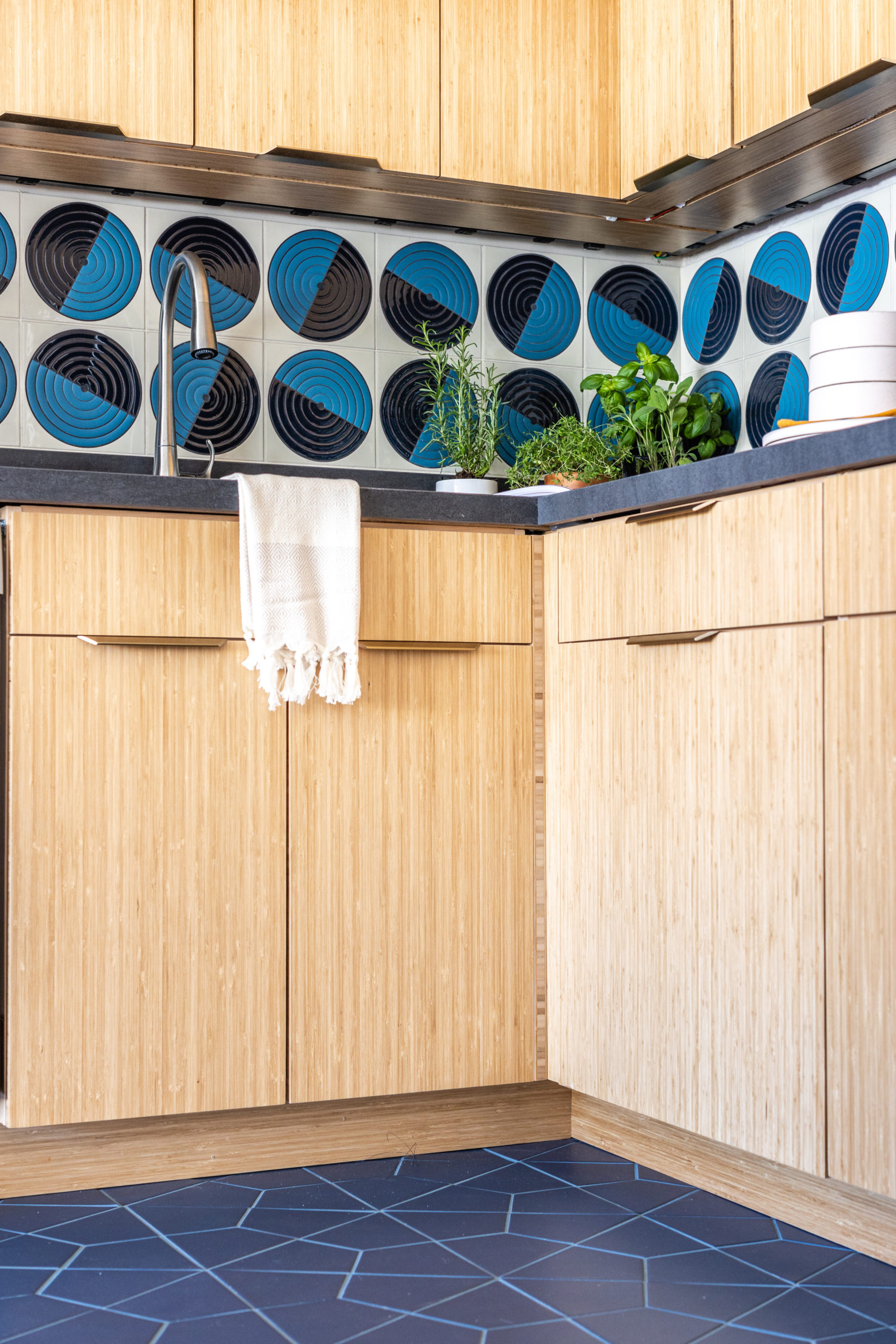
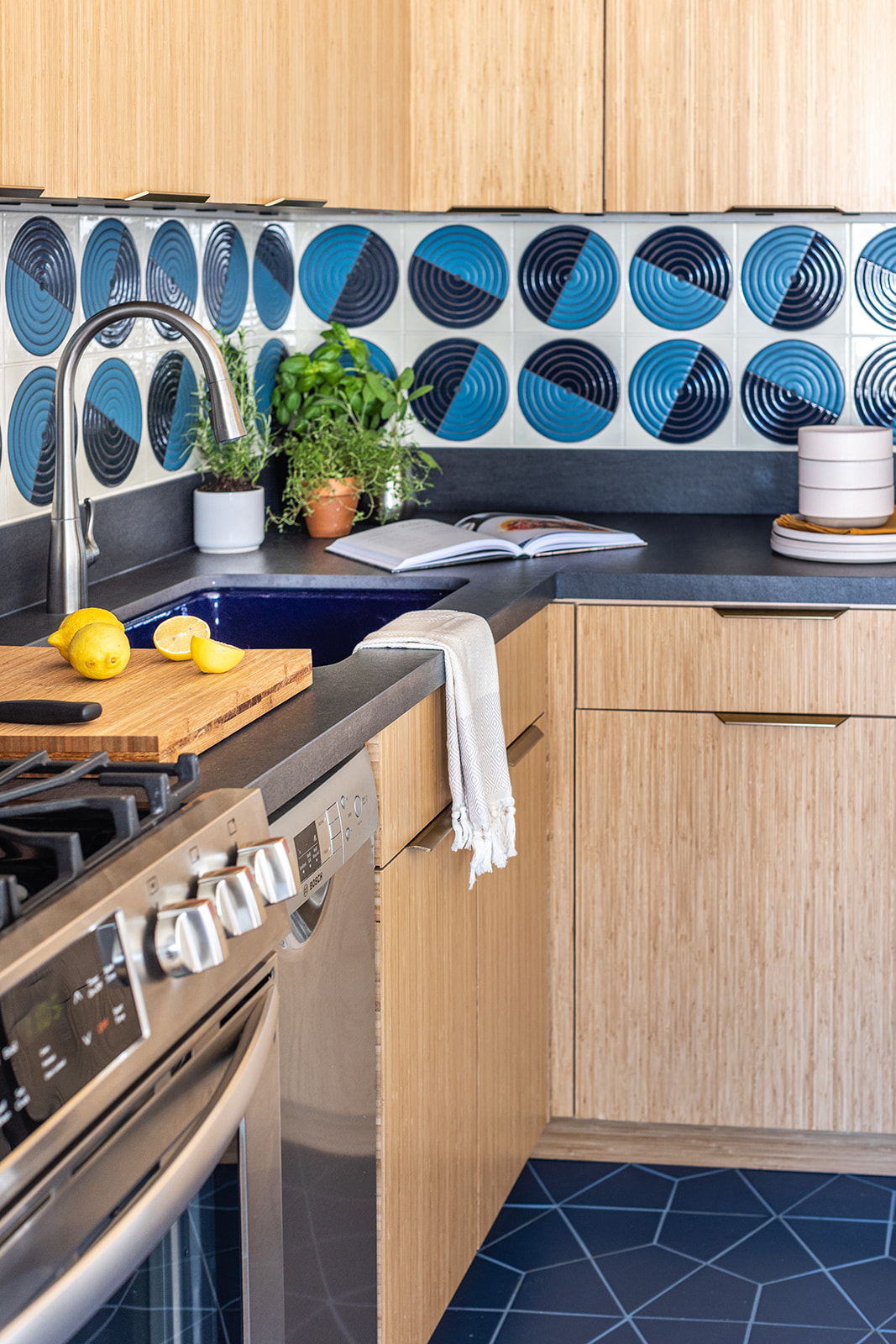
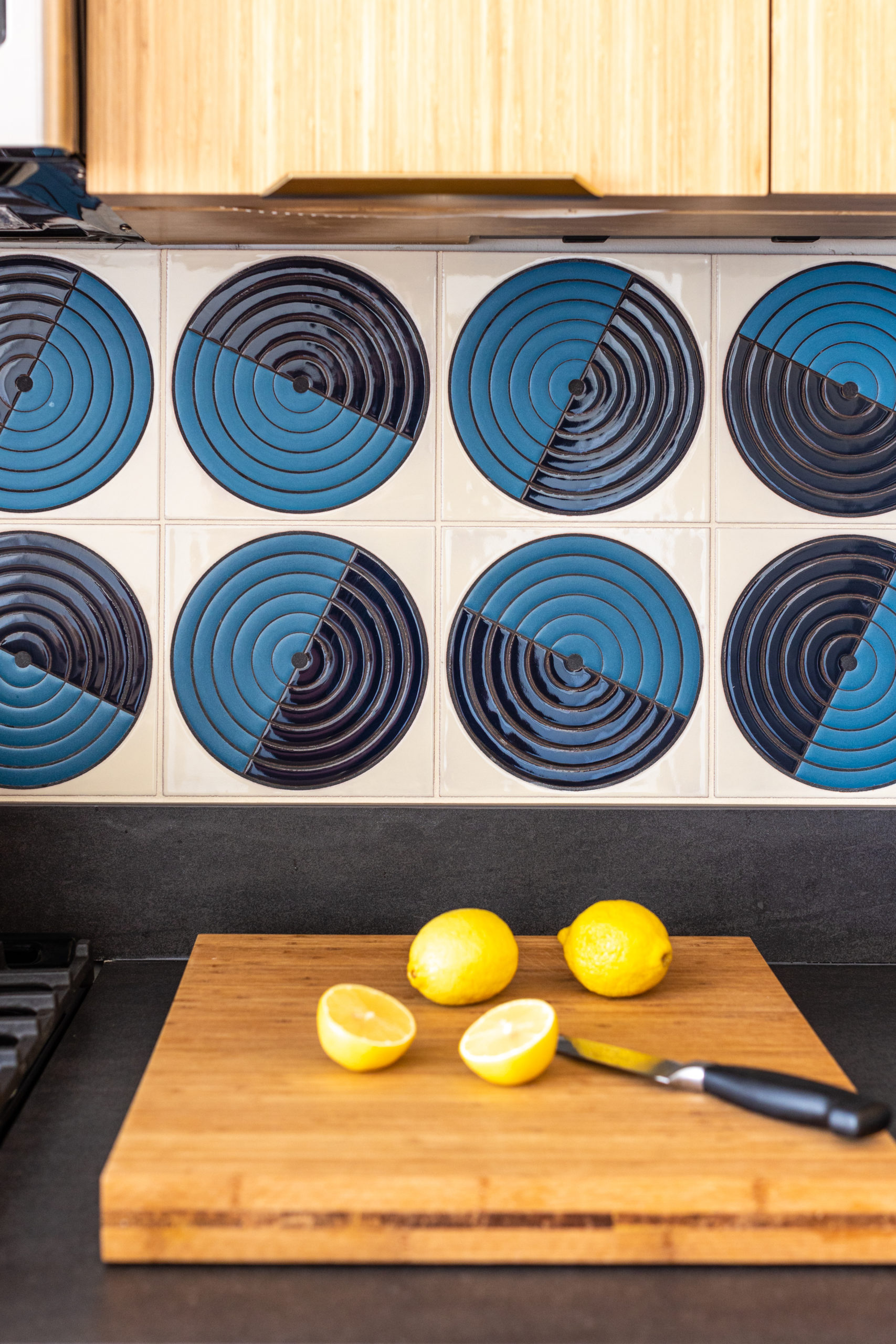

COUNTERTOPS
Dekton by Cosentino
What We Chose: Dekton’s sintered stone in the Bromo colorway, a charcoal-toned surface that is virtually indestructible. It’s an ultra-compact surfacing material made up of quartz, porcelain and other raw materials. Using high-temperature compression, its manufacturing process simulates what happens naturally to rocks over thousands of years. This forms a non-porous material with a flexural strength that is five times that of granite. Dekton is resistant to UV rays, scratches, stains, thermal shock (extreme hot and cold) and has very low water absorption.
Why We Love the Brand: Dekton is part of the Cosentino family of surface brands. And Cosentino has been employing sustainable practices since before it was “cool” to be green. It operates its own nonhazardous waste treatment and recovery plant, which includes recycling rejected material generated in Dekton’s production process and re-using it to produce new Dekton slabs. Cosentino offsets all greenhouse gas emissions for the lifecycle of its Silestone Sunlit Days collection in partnership with the Voluntary Carbon Market. And its building the largest photovoltaic self-consumption installation in Spain complete with 37,000 solar panels.
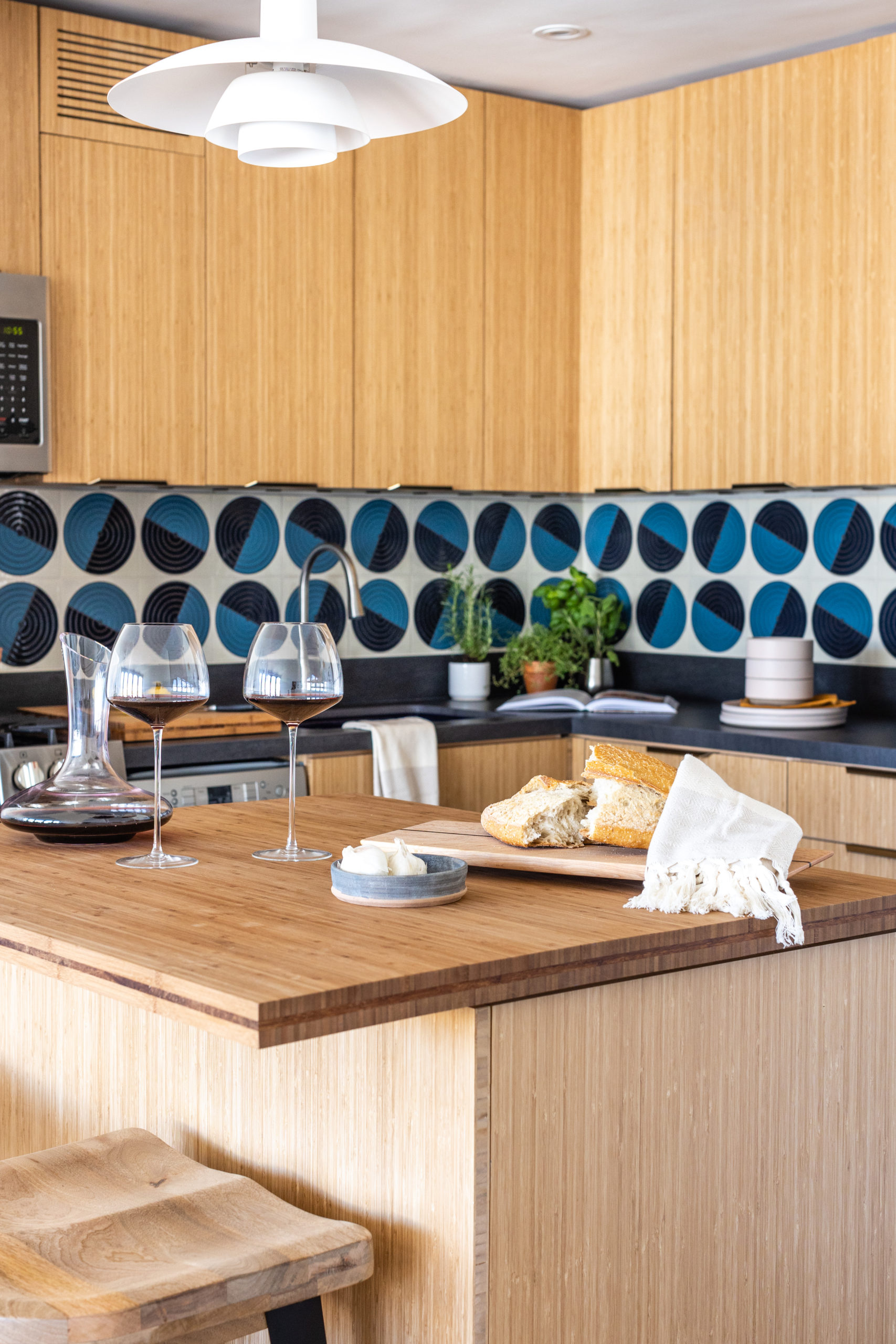
Teragren
What We Chose: Teragren bamboo for the island countertop. This countertop is made with rapidly renewable Moso bamboo grown in the Zhejiang province of China. It’s harvested—at peak maturity ensuring maximum hardness and durability—by hand and manufactured close to the site, keeping its carbon footprint small. Bamboo also captures and sequesters carbon, making this countertop a carbon negative product. We used leftover material to make a heavy-duty cutting board.
Why We Love the Brand: In addition to Teragren’s inherent commitment to the environment through choosing rapidly renewable bamboo as its material of choice, Teragren’s products qualify for LEED certification and are easy on your indoor air quality.
CABINETRY AND ISLAND
Plyboo Bamboo | Designed and Fabricated by French Cabinetry
What We Chose: Amber Edge Plyboo Bamboo Cabinetry from French Cabinetry. French Cabinetry is a California-based provider of fine European and U.S.-made cabinetry from concept to completion. And Plyboo is a sustainable and eco-friendly architectural bamboo product—formaldehyde-free and rapidly renewable. French Cabinetry custom-crafted cabinets in Los Angeles and shipped them to Chicago complete for ease of installation.
Why We Love the Brand: French Cabinetry was founded by Jam Iksoulene, a French cabinet maker who wanted to bring Europe’s philosophies of precision, craftsmanship, durability and sustainability to the United States. That means things like VOC-free paints, recycled materials, and a lower ecological footprint. Their material choices are vast and the possibilities are limited only by your imagination. But not to worry—Iksoulene has you covered there too.
BACKSPLASH AND FLOORING
Fireclay Tile
What We Chose: Fireclay Tile’s Maze in Warm Motif for the backsplash and Hexite in Blue Velvet for the flooring. Both tiles are handmade in California using nontoxic ceramics. Maze’s two-toned circular forms were arranged in a tumbling pattern in #EcoRenovate but could also be positioned to form a square within the circles. Hexite is actually formed from a smaller kite-shaped tile that, when paired with multiple tiles of its kind, can form a modern take on a classic hexagon shape or other unique patterns.
Why We Love The Brand: Fireclay’s handmade quality is something to be admired, as is their manufacturing process. Think reincorporating glaze waste into their clay, water reclamation, using 100% renewable energy, offsetting its carbon emissions, using recycled granite fines in their tile bodies, and qualifying for several green certifications. But it’s their Made For Good commitments that we might love the most, like how they donate 1% of all Brick sales to the National Parks Conservation Association.
PAINT
Recolor Paints
What We Chose: Recolor Paints’ White on the ceiling and Sail on the walls. In a world where 70 million gallons of paint end up in our landfills and waterways each year, Recolor is a bright spot in the building industry. They take unused post consumer and post industrial latex paint, screen it, consolidate it, filter impurities, remove contaminants, add antimicrobial and preservative agents, and render an upcycled paint. The process of using paints that have been opened and reprocessed naturally eliminates much of the VOCs in the paint.
Why We Love the Brand: In addition to helping clear our waterways, Recolor also partners with Habitat for Humanity, selling their paints through Habitat for Humanity’s ReStore and thus helping to build houses and support the local community.
LIGHTING
Louis Poulsen
What We Chose: The PH 4/3 Pendant Light by Poul Henningsen from Louis Poulsen. This light, originally designed in the 1920s by Henningsen, features spun aluminum shades, making it recyclable, and we converted it to use an energy-efficient LED bulb.
Why We Love the Brand: Louis Poulsen creates intentional lighting that has a positive effect on a person’s well-being. And they do so with sustainability in mind—from reducing waste, to sourcing raw materials that can be recycled, to increasing energy efficiency for the end user and using renewable energy in their manufacturing processes.
We’re thrilled that #EcoRenovate has attracted exceptional sustainable brands such as Fireclay Tile, Recolor paints, Dekton by Cosentino, Avocado, Sabai, Chairish, Earth Weave, and French Cabinetry. Learn more about our sponsors and design partners throughout the #EcoRenovate journey.
KITCHEN ACCESSORIES
- Vintage Eva Zeisel Tea Set from Replacements
- Flat Cup and Saucer Set in Museum White by Castelton
- Tea Pot, Creamer, Sugar in Hallcraft White by Hall
- Axel Dinnerware (shown here in Caramel) from CB2
- Rosenthal Tac 02 Crystal Wine Glasses
- Perfect Pot by Our Place (shown in Spice), ceramic nonstick surface, free of harmful PFOAs and PTFEs
In Progress: What To Expect During Your Renovation
Renovating your kitchen, especially when it wasn’t built green to begin with, can be overwhelming. The process may open up the risks for toxins to be released during construction. In the case of #EcoRenovate, we knocked down a wall and ripped out the floor and cabinetry. You can find helpful tips on how to reduce exposure to toxins that might be released during a process like this on Elemental Green.
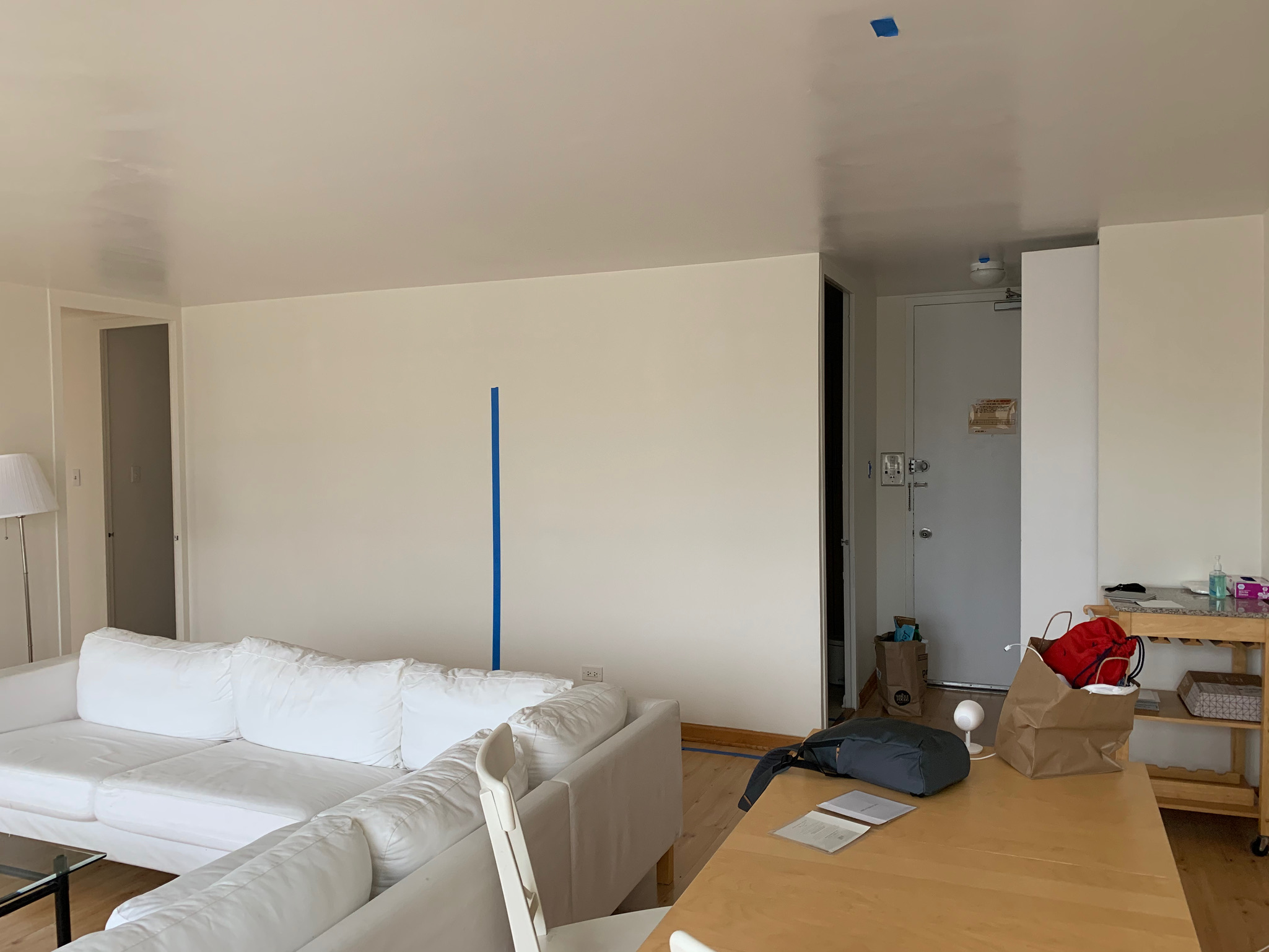
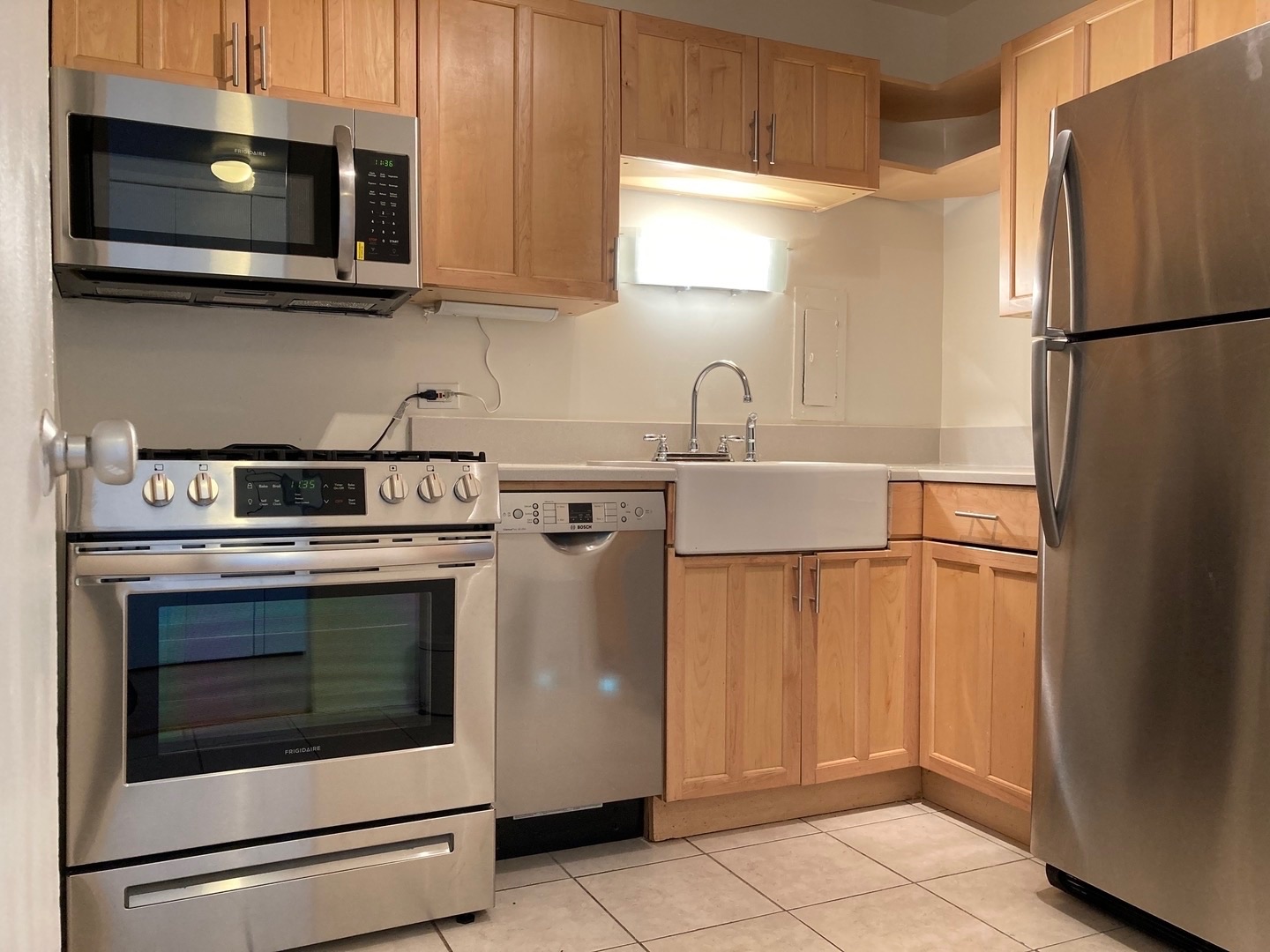
In-Progress Photos ⓒElemental Green
